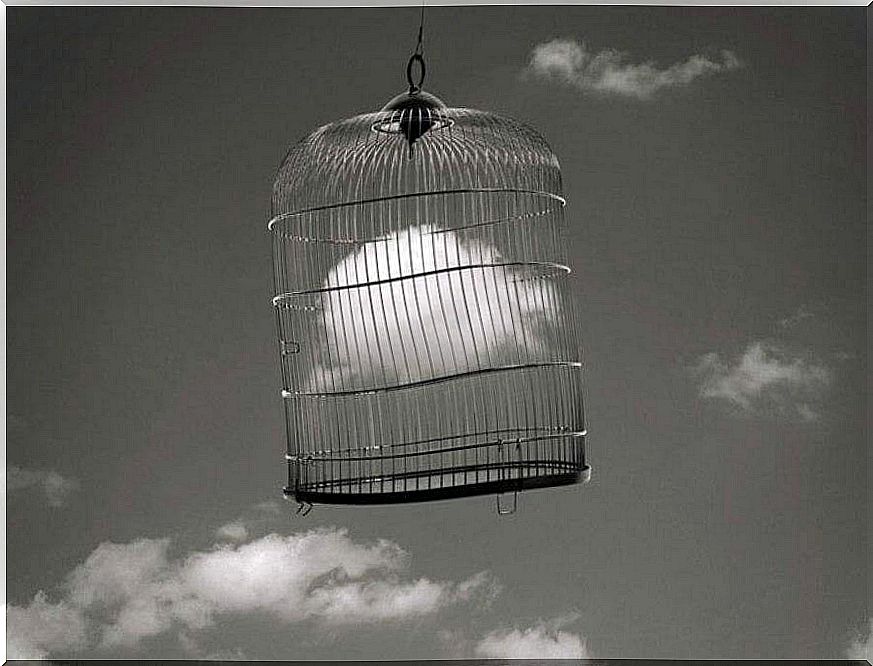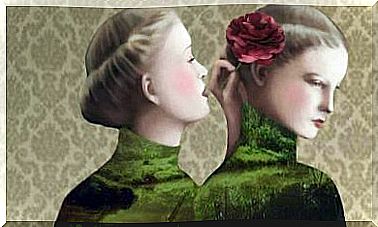The Avoidant Personality, A Prison Within Oneself

Avoidant Personality Disorder is relatively common, although not frequently diagnosed. It is characterized by great withdrawal, which inhibits the person socially to an extreme degree. The avoidant personality avoids social activity and is highly sensitive to any criticism or negative evaluation made of him.
Who has an avoidant personality feels inadequate. You think that you are inferior to others and that you will easily be rejected, humiliated or ridiculed by others. He also has the perception that he is always being watched and criticized, which is why he remains immersed in many feelings of fear.
Avoidant Personality Traits

The most common traits in an avoidant personality are very specific. Therefore, we are going to see what they are below in order to identify them from now on.
- They tend to be suspicious, but this distrust is due more to the fear of finding themselves in a commitment or being considered inferior to others, than to the fear that other people will harm them.
- You suffer restlessness or anguish when you are alone, because you think that you will be unable to take care of yourself or protect yourself from eventual threats.
- You have a hard time making decisions if you don’t have a good dose of advice from others, or enough signals of approval and encouragement.
- You have great difficulty expressing your disagreements because you fear being rejected or disapproved of for it.
- His desire for acceptance is so high that he often volunteers to do unpleasant tasks or notable sacrifices for others.
- Try to delegate responsibility for the most important areas of your life to others.
- You have a hard time taking initiatives or undertaking projects. He does not trust his own reasoning and assumes that he will be incapable of accomplishment, even if he has the interest or the motivation to act.
- It establishes few relationships and these generate strong bonds of dependency. If one of these ties breaks, he will eagerly seek to replace it with another. He does not tolerate loneliness, although he seeks it.
- Their fear of abandonment goes beyond the limits of what is reasonable.
Details and treatment
The aforementioned traits are only considered to configure a disorder as such if they are excessively marked and lead to a lifestyle in which maladjustment predominates.
If the fear of being negatively evaluated turns into an inability to study, work or leave home, we speak of a disorder. If, on the other hand, these traits do not prevent a relatively normal functioning, we speak of a tendency to avoid.

There is no full agreement on whether it is extreme “social phobia” or whether avoidance can be seen as an independent disorder. What there is consensus on is that it is part of a problem that stems from anxiety.
The treatment of this disorder is not easy, mainly due to the fact that the patient has a hard time trusting the therapist. He thinks that a psychologist is going to censor him, make fun of him, or reject him. Overcoming this barrier is perhaps the most important step in leaving the problem behind.
The disorder may be associated with childhood experiences. If this is the case, in the first instance it will be about making the fears that are automatically awakened aware, evaluating their validity and receiving training to face them, little by little.
But in the second instance, it is necessary for the person with this condition to be able to evoke childhood experiences that cause restlessness and anguish. You must rework your memories.
If you suspect you have this problem, don’t hesitate to ask for help. If you don’t feel ready to consult a psychologist, try to read up on it and learn as much about the disorder as possible. Think about the kind of therapist you would like: man, woman, young, old… Define the ideal profile. Talk about it with those close to you and ask them to help you find someone you trust. You will get ahead.
Image courtesy of gagilas









